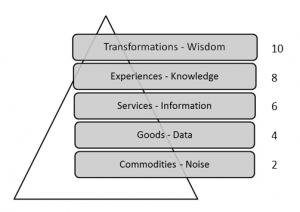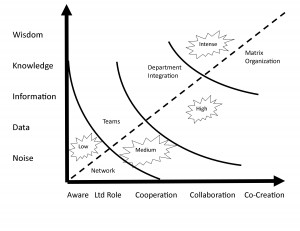If the customer interaction (iCustomer) is an important part of marketing you should be able to measure it. But first, let’s review a few of other popular “scores” out there.
Net Promoter is a customer loyalty metric developed by (and a registered trademark of) Fred Reichheld, Bain & Company, and Satmetrix. It was introduced by Reichheld in his 2003 Harvard Business Review article “The One Number You Need to Grow”. The most important proposed benefits of this method derive from simplifying and communicating the objective of creating more “Promoters” and fewer “Detractors”. The Net Promoter Score is obtained by asking customers a single question on a 0 to 10 rating scale, where 10 is “extremely likely” and 0 is “not at all likely”: “How likely is it that you would recommend our company to a friend or colleague?” Based on their responses, customers are categorized into one of three groups: Promoters (9–10 rating), Passives (7–8 rating), and Detractors (0–6 rating).
The Klout Score is a measure of your online influence based on your ability to drive action. Every time you create content or engage you influence others. The Klout Score uses data from social networks in order to measure:
- True Reach: How many people you influence
- Amplification: How much you influence them
- Network Impact: The influence of your network
There are of course opponents of each but both are exceptionally good tools when used in the correct way. They give you a measure of how others view you or your product/service. But they do little in the way of informing you how much interaction is required with a customer. Organizations need to have healthy relationships and interactions with their customers. However, they need to know how much interaction is needed based on the product or level of service being delivered.
There are two components of the iCustomer Level. One is the depth of your organization’s customer interactions. Second is the Progressions of Economic Value and as it corresponds to a level of Progression of Value Intelligence as described in Pine and Gilmore’s The Experience Economy: Work Is Theater & Every Business a Stage.
Starting on the horizontal axis, review both ends of the spectrum with 0 as no interaction and Co-creation of products as a 10 and the highest form of interaction. On that scale of 1 to 10, rate the state of interactions with your customers today. It will have more value if you do this by individual customer segments.
On the vertical axis use the Progressions of Economic Value and corresponding to a level of Progression of Value Intelligence. The Pine and Gilmore description of each stage suffices for the needed scaling:
- If you charge for stuff (noise), then you are in the commodity business
- If you charge for tangible (data) things, then you are in the goods business.
- If you charge for the activities (service) you execute, then you are in the service business.
- If you charge for the time (experience) customers spend with you, then you are in the experience business.
- If you charge for the demonstrated outcome (wisdom) the customer achieves, then and only then are you in the transformation business
The iCustomer level is not a tangible number. It is strictly based on the degree of interaction your organization needs based on the products/services it is delivering. You cannot afford to give high level support when delivering a commodity. Nor can you give a low level of support when you are part of a transformation. There is not wrong or right answers but is meant to serve as a guide. It is a way to create a path for discussion, such as:
- Are we supplying to little or not enough interaction?
- Do we view our position the same as customers do?
- What is (is not) working?
- What is the expectation of the other?
- Who/What needs to be communicated?
- What type of support is needed?
- Can I strip something away and sell it as a commodity?
- Can we add support and sell it as an experience?
 I would recommend that you create your own iCustomer chart with your own scaling. Change the vertical axis to your own progression of products (See the The 7 step Lean Process of Marketing to Toyota). If there are no plans ever to co-create products with a customer, why put it on the horizontal axis? Make the iCustomer your own and debate it internally and externally. Leave it become a discussion point.
I would recommend that you create your own iCustomer chart with your own scaling. Change the vertical axis to your own progression of products (See the The 7 step Lean Process of Marketing to Toyota). If there are no plans ever to co-create products with a customer, why put it on the horizontal axis? Make the iCustomer your own and debate it internally and externally. Leave it become a discussion point.
Note: The idea of the iCustomer Level came from the book Designing Your Organization: Using the STAR Model to Solve 5 Critical Design Challenges.
Related Information:

